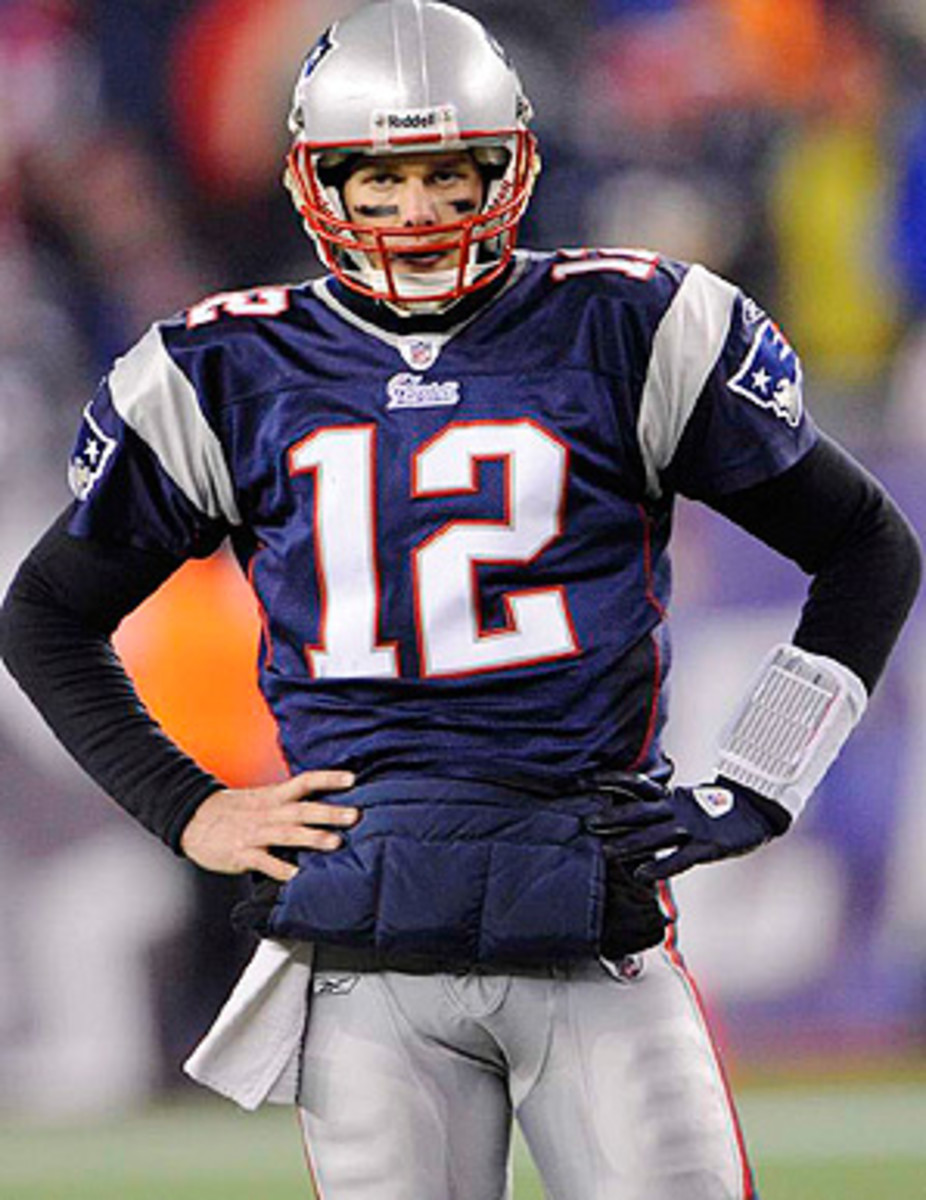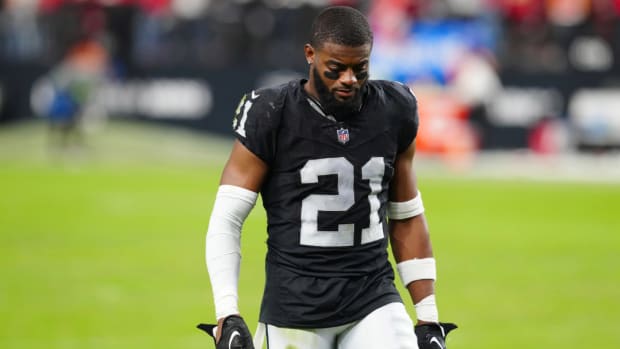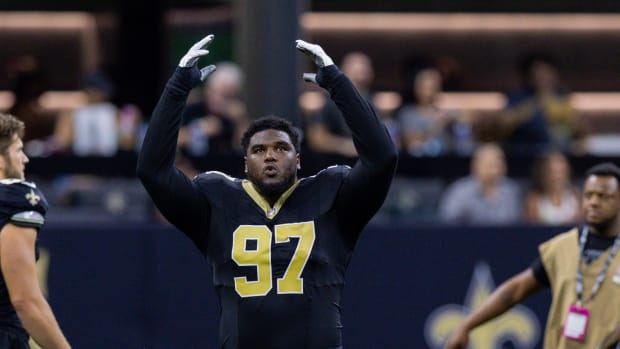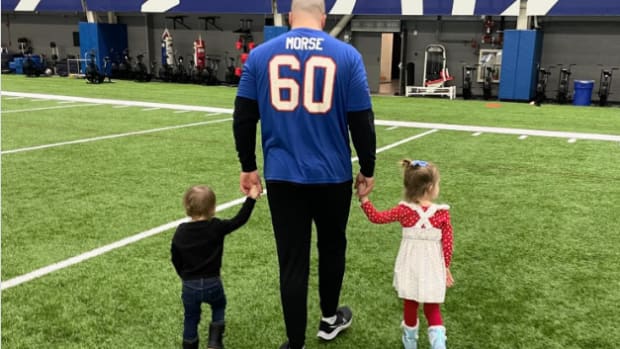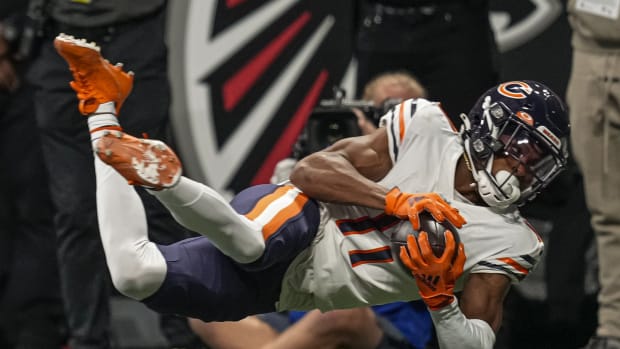What to expect from Brady v. NFL
On Wednesday, Judge Susan Nelson of the U.S. District Court for the District of Minnesota will hear a motion for a preliminary injunction brought by the plaintiffs in Tom Brady et al. v. NFL. Our legal expert Michael McCann breaks down what to expect and what it means for NFL football.
1. What is Brady v. NFL really about?
A group of NFL players and one NFL draft-eligible player have brought this lawsuit as a class action on behalf of other NFL players and draft-eligible players. They seek immediate injunctive relief in the form of a preliminary injunction that would enjoin the NFL from continuing its lockout.
The players also seek a full trial, which would occur months or possibly years from now, to examine whether the NFL violated federal antitrust law in locking them out. The players also challenge the NFL's various restrictions on competition (for example, the salary cap and the NFL draft) as violating federal antitrust law. Because of the labor exemption, which immunizes collectively-bargained rules from federal antitrust law, those restrictions had been exempt from federal antitrust law while the NFLPA was certified.
If the players ultimately prevail in an antitrust trial, they would receive treble damages. By law, damages in private antitrust litigation are automatically multiplied by three. Potential damages, in fact, could be in the billions of dollars. However, the vast majority of private antitrust lawsuits -- perhaps as many as 95 percent -- are settled before a court reaches a decision.
Another motivation for the players in bringing antitrust litigation relates to the pretrial discovery process and the players' contention that the league has not sufficiently opened up its books.
In litigation, the trial judge will compel both the plaintiff and defendant to provide each other with various materials, including sensitive financial documents, to ensure that each side is playing fair. Discovery would also include interrogatories, which are formal written requests each side makes of the other to truthfully answer questions, and depositions, which are sworn statements made under oath in the presence of a court reporter and which are often videotaped. It is therefore possible that high-level persons involved in the labor dispute, including NFL commissioner Roger Goodell and NFLPA executive director DeMaurice Smith, could find themselves deposed and answering difficult questions from opposing counsel.
2. How does Brady v. NFL relate to the NFLPA decertifying?
Brady v. NFL would not be brought but for the NFLPA moving for decertification on March 11. By decertifying, the NFLPA renounced its representation of NFL players in collective bargaining. In the absence of a bargaining relationship with the league, NFL players, as individual persons rather than union members, can use antitrust law to challenge the NFL.
If the NFLPA had not moved for decertification on March 11, it would have been forced, pursuant to a term in the recently-expired collective bargaining agreement, to wait until September to decertify. In that scenario, the league could have still ordered a lockout and thus stopped paying players their salaries and other benefits. Without antitrust law as a weapon, the locked-out players would have been in a severely disadvantaged bargaining position.
Keep in mind, the NFLPA's decertification is not a settled matter. The NFL has filed a charge with the National Labor Relations Board claiming that the NFLPA only wanted to decertify in order to pave the door for antitrust litigation. The league insists the NFLPA never wanted to reach a new collective bargaining agreement. In labor law terms, the league contends that the NFLPA refused to bargain in good faith and thus violated Section 8(b)(3) of the National Labor Relations Act.
To bolster its argument, the league cites the substantial concessions it made in the negotiations as evidence of its willingness to bargain. The refusal of the NFLPA to accept those terms, in the league's view, can be seen as evidence of bad faith.
The players, in turn, argue that the NFL refused to offer an acceptable set of terms and that the CBA gave it no choice but to decertify on March 11. The players also contend that the NFL itself refused to engage in good faith bargaining by not sharing the kinds of financial records that would corroborate the NFL's numbers to the satisfaction of players.
If the league prevails in this matter before the NLRB, the NFLPA's decertification would likely be blocked and the NFLPA would likely have to pay the NFL money damages. If instead the players prevail, the NFLPA would remain decertified until the players choose to recertify.
A hearing on the NFL's charge will take months, if not longer, however. The NLRB will have to thoroughly investigate the charge, explore the evidence, and assess how it impacts the NFLPA's decertification.
3. Why do NFL players want a preliminary injunction from Judge Nelson?
NFL players want a preliminary injunction to stop the NFL from continuing its lockout. If the lockout is stopped, NFL players would go back to work. A preliminary injunction would also compel the league to operate under the terms of the recently expired collective bargaining agreement, at least until a new agreement with the players is reached. From the standpoint of day-to-day NFL football, if Judge Nelson orders a preliminary injunction, things would return to the way they were last season.
A preliminary injunction, however, would neither eliminate the possibility of the lockout resuming at a later date nor terminate the players' antitrust litigation. Pretrial hearings for a full trial on the merits of the lockout would be scheduled for later this year or next year. Antitrust litigation tends to be long and expensive, particularly in the pretrial stage as there is often extensive discovery. While the vast majority of private antitrust cases ultimately settle, if the league nevertheless wins an antitrust trial, the lockout could be reinstituted. Alternatively, if the players win, the NFL's lockout would be permanently sidelined and the players might receive billions of dollars in trebled damages.
Practically, though, a preliminary injunction for the players would be a game changer.
First, it would provide them with substantial leverage in negotiations with the NFL: the league would be barred from locking them out, perhaps through the entire 2011 season, depending on when a trial is scheduled.
Second, it would make the prospect of an antitrust trial even more threatening to the NFL. As noted above, the pretrial phase of the trial would include discovery, which would likely enable players to obtain financial information about NFL teams that were unavailable through collective bargaining. Also, league owners know that if they lose the antitrust litigation, they may wind up paying players billions in trebled damages. The apparent unity of all 32 NFL ownership groups could thus come under fire.
4. What do the NFL players have to show to obtain a preliminary injunction?
There are four basic factors that players need to convince Judge Nelson of for her to grant the motion. No single element will prove determinative; Judge Nelson will instead balance them and determine whether to grant the players a preliminary injunction or preserve the lockout's status quo until the merits of the players' arguments can be heard in a full trial.
It should be noted that judges are often reluctant to order preliminary injunctions because while preliminary injunctions are modestly labeled "preliminary", they pose a substantial impact on the final outcome of a case. Courts have sometimes described a preliminary injunction as an "extraordinary" remedy that should only be awarded upon a clear showing. Bottom line: the players will have an uphill battle in obtaining a preliminary injunction.
Nonetheless, here is what the players have to show:
First, the players will have to show that they would probably win on their legal claims in a full trial. To do so, they will argue that antitrust law bars business agreements among competitors -- in this case NFL teams, which compete on and off the field -- that are more anticompetitive than procompetitive. Certain agreements, such as group boycotts, are so anticompetitive that they are inherently illegal, regardless of their procompetitive benefits.
The players can probably show that they would win in antitrust litigation against certain aspects of the NFL's business model, most notably the salary cap and the college draft. When not borne from collective bargaining, these types of restraints on trade have been viewed negatively by courts. Courts are troubled by the idea that competing teams can limit the competition for player services in ways that undoubtedly harm players' income and employment autonomy. The NFL draft, for example, prevents a college player from enticing multiple teams to bid for his services and also prevents the player from playing for his preferred employer.
The players may enjoy less success arguing that the lockout itself is illegal. Employers generally preserve the right to lockout employees to safeguard against financial losses, such as those from an impending labor strike. Employers cannot use a lockout, however, to avoid bargaining or to merely improve their bargaining position.
Given that the NFLPA decertified before the league commenced its lockout, the league can argue that it was the NFLPA that sought to avoid bargaining. The league can also maintain that it ordered a lockout only to avoid the financial losses that teams would suffer from the decertification. In response, the players will assert that they were willing, and remain willing, to play under the rules of the recently-expired CBA.
Second, the players will have to show a threat of irreparable harm, which refers to a harm that cannot be adequately remedied by money damages, which the NFL would be ordered to pay if it loses the antitrust trial.
To prove irreparable harm, players will cite how a lost offseason would lead to non-quantifiable harms, such as not being able to sign with the best team for a given player, and how just one lost season would irreparably harm players' careers, which tend to span a few years and, in most cases, only when players are in their 20s. The NFL will respond with a persuasive point: assuming for the sake of argument that these are cognizable harms, money damages could, in fact, remedy the players, as courts are usually capable of determining a payment schedule for hard-to-quantify harms.
Third, the players will have to convince Judge Nelson that a preliminary injunction would not harm the NFL more than it helps the NFLPA. The players will contend that because the NFL has thrived in recent years and because no team appears to be losing money, ending the lockout and reinstituting the recently-expired CBA would not unduly harm the NFL.
The NFL, in turn, will insist that a preliminary injunction would place NFL players in unfairly advantageous position, and would harm the economic interests of NFL owners, who claim that the league's economics do not work. Along those lines, the NFL will insist that a preliminary injunction would be premature until the NLRB decides on the NFL's labor charge. The league will also cite the Norris-LaGuardia Act, which discourages the use of injunctions while labor and management are at impasse, as evidence of the harm it would suffer from a preliminary injunction.
Fourth, the players will have to show that a preliminary injunction would advance the public's interest. Given the popularity of NFL football, the players may have their best argument here. A preliminary injunction would restore the NFL and bring the parties back to the bargaining table. It would substantially increase the likelihood of games being played this fall.
On the other hand, Judge Nelson will consider the public's interest in how granting the players' motion in this case could impact the granting of similar motions in other types of labor disputes, including those that have nothing to do with sports. She may be concerned that granting an injunction here would encourage other unions to pursue the decertification path.
5. Will Judge Nelson make her decision on Wednesday?
Possibly, especially since she has already reviewed written briefs by both parties, but she is not obligated to decide on Wednesday. In fact, given the complexity of the legal issues at stake, and the need to review an extensive amount of facts to make a fair determination, she may require additional documentation from both parties and schedule additional hearings. She could also decide to consolidate a hearing on the preliminary injunction with a full trial on the merits, with the date of the full trial likely moved up to this spring or summer. One advantage to a consolidated approach is that much of the evidence on the NFLPA's preliminary injunction motion would be repeated in a trial on the merits, so combining the hearings would be efficient.
6. If Judge Nelson refuses to issue a preliminary injunction, what happens?
From a legal perspective, a denial of the players' motion for a preliminary injunction would preserve the current state of affairs between NFL players and the NFL. And currently, as we know, the NFL has locked out the players. The lockout would thus continue, at the discretion of the NFL and its owners. A trial on the merits of the players' arguments, including those concerning the lockout, could still be heard, though such a trial would be months or even years from now.
Depending on why Judge Nelson refuses to issue a preliminary injunction, a refusal could signal significant weaknesses in the players' legal arguments. If so, the refusal could force the players to accept the possibility of owners continuing their lockout through the 2011 season unless the players capitulate to the NFL's demands.
7. Can the losing side on the preliminary injunction appeal Judge Nelson's decision?
Yes, the loser could seek an "interlocutory" appeal -- one filed before the final disposition of a case -- to the U.S. Court of Appeals for the Eight Circuit. The odds of succeeding in such an appeal would be low, however, as the Eight Circuit would review Judge Nelson's decision under the highly deferential of "abuse of discretion" standard. Usually if a trial judge correctly enunciates the proper standard for a preliminary injunction and applies it in a plausible way, an appellate court will not reverse the judge's decision. An interlocutory appeal could also delay a hearing on the merits of the lawsuit, particularly since appeals of preliminary injunctions normally take weeks or months to be heard and would need to be heard before a full trial.
8. How can the NFL negotiate with NFL players when the NFLPA is decertified?
The NFL cannot negotiate with the NFLPA, but through the Brady v. NFL litigation process, the league can negotiate with NFL players in a similar spirit. Here's why: whether Judge Nelson grants or denies the motion for a preliminary injunction, a full trial is at least months away. During that time, attorneys for each side can negotiate with the other to procure a settlement, ostensibly on the legal issues in the litigation but more broadly on the issues that divide the two groups.
The settlement process would also be supervised by Judge Nelson. She will likely play a key role in brokering an agreement between the NFL and NFLPA. Assuming the attorneys eventually reach an agreement, the NFLPA would then recertify and sign a new CBA.
9. What about Eller v. NFL, the other antitrust lawsuit that was just filed?
Late last month, a class of retired and prospective NFL players filed a lawsuit, Carl Eller et al. v. NFL, with similar antitrust claims as found in Brady v. NFL. The lawsuit, which likewise asks for a preliminary injunction against the NFL lockout, was filed in the same court as Brady v. NFL: the U.S. District Court for the District of Minnesota. Judge Nelson will hear preliminary injunction arguments concerning both lawsuits on Wednesday.
Eller v. NFL is different from, and potentially more threatening, than Brady v. NFL because neither retired players nor prospective players -- the plaintiffs in Eller v. NFL -- are bargaining members of the NFLPA. With the NFLPA decertified, moreover, it cannot represent the interests of the Eller plaintiffs. Put more basically, the NFLPA may be removed from the picture in Eller v. NFL, a point which would take away a key defense the NFL enjoys in Brady v. NFL.
In Brady v. NFL, the NFL contends that the plaintiffs, while members of the NFLPA, engaged in bad faith during the collective bargaining discussions to bring an antitrust lawsuit. But in Eller v. NFL, the NFL cannot argue that the plaintiffs engaged in bad faith to bring an antitrust lawsuit, since neither prospective nor retired players were among those who collectively bargained with the NFL.
Retired players, moreover, are arguably harmed by the lockout because NFL-sponsored programs that address the needs of retired players are partly financed by fines of NFL players. During a lockout, no NFL player will be fined, thus removing a funding source for these programs.
For their part, prospective players claim to be harmed by the NFL lockout because they are "boycotted" by competing NFL teams from using their football talents for compensation. They also emphasize that there is no substitute league for the NFL that would significantly mitigate their harm.
The NFL, however, will likely highlight decisions by courts which express that players' associations bargain not only on behalf of current players, but also on behalf of those not yet in the league and those who were already in the league. As a result, the NFL will maintain that neither college players nor retired NFL players have standing to bring a lawsuit: although the Eller plaintiffs are not formal members of the NFLPA, their interests are represented by those formal members.
In response, expect the Eller plaintiffs to insist that because the NFLPA is decertified, it cannot represent any players, be they prospective, current or past.
Eller v. NFL could become extremely important should Judge Nelson disfavor the Brady plaintiffs' motion for a preliminary injunction on grounds that the NLRB should first decide on the legality of the NFLPA's decertification. Judge Nelson could reason that the claim brought by the Eller plaintiffs, unlike the one brought by the Brady plaintiffs, is sufficiently independent of the NLRB. If she otherwise agrees with the legal arguments against the NFL lockout, Eller v. NFL could supply with her greater justification for issuing a preliminary injunction
10. Can NFL teams sign replacement players during the lockout?
Technically they can try, but practical and legal hurdles would make doing so extremely unlikely.
The NFL might argue that if NFL players won't accept the league's best CBA offer, the league has no choice but to resume games with other players who are willing to play. This would not be an unprecedented idea, as the NHL considered turning to replacement players during the 2004-05 NHL lockout. Moreover, because NFL players are no longer represented by the decertified NFLPA, it is possible that some of them could be enticed to join a "new," though clearly not improved, NFL.
While intriguing, the idea of replacement NFL players is unlikely to become a reality. For one, antitrust law looms as a complicating deterrent to any plan involving replacement players. To avoid application of antitrust law -- which would be applied if the NFL imposes competition restrictions (e.g., salary caps) in the absence of collective bargaining -- these "other players" would have to organize as a players' association and gain certification from the NLRB as a collective entity.
The NFL would also risk additional litigation by turning to replacement players. If the league pursues that path, NFL players would file unfair labor practice charges with the NLRB and argue that the NFL is not acting in good faith in the labor dispute. NFL players might also file litigation for breach of their employment contracts, on grounds that they, and not replacement players, should be getting paid to play NFL games. Also, NFL players who join replacement players might risk being sued by the NFLPA for breach of fiduciary duties to other NFL players.
Significant practical hurdles would also stand in the way. Consider that there are 32 NFL teams with 53-man rosters. Assuming no NFL players broke ranks, it would take 1,696 replacement players to restore the league. Where would all of these players be found, and what would be their talent level, experience and state of physical condition? Would any television network want to broadcast games featuring these players? Would fans pay to see them play?
11. Is Judge Susan Nelson more pro-player or pro-league?
We don't yet know. The professional background of Judge Nelson, who was nominated by President Obama and unanimously confirmed by the U.S. Senate last December, does not provide the kinds of clues we should rely on to make a prediction. If anything, her background suggests that she is probably moderate or centrist.
Besides, predictions about a judge's ideology, and how it will influence their view of NFL legal issues, often prove wrong. Consider Judge David Doty, who in 1993 was chosen by the NFL and NFLPA to have jurisdiction over labor disputes between the two sides.
Since that time, Judge Doty has generally favored the NFLPA in disputes, most notably -- as Peter King recently discussed -- when he allowed Michael Vick to keep his signing bonus money with the Falcons despite Vick's prison sentence and, this past February, when Judge Doty held that the NFL owners cannot use money from television broadcasting deals that they were contractually-entitled even if there were no 2011 NFL season. While Judge Doty has been viewed as pro-labor, he was nominated to the federal bench by a president who was generally not viewed as pro-labor: President Ronald Reagan. It stands to reason that NFL owners probably expected Judge Doty to embody a different judicial philosophy than what he has shown.
12. Your best prediction: Will there be a 2011 season?
Yes. The NFL is the most successful professional sports league in the United States. While several ownership groups are saddled with paying back debt on stadium deals, most appear to be doing quite well with their teams. Unlike the NHL's somewhat dire situation in 2004, the NFL is not a league that requires a new economic formula; the current one works well.
It is also worth considering how the lockout financially impacts players today with how it would impact them in the fall. NFL players are not paid year-round; most players instead receive 1/16th of their contract during each game of the regular season. While they also receive payments for preseason and postseason games, and while some also receive bonuses that complicate the timing of their overall compensation, the bulk of income received by NFL players occurs during the regular season: from September to early January.
How will those players feel when they start missing game checks in September, especially when their last game check was nine months earlier? The NFLPA has tried to mitigate the lockout's financial impact on players by providing each player about $60,000 in available funds, but as discussed in a previous column, a good portion of that money will go to pay for players' health care. Also, considering that the average NFL salary is $1.9 million, $60,000 will probably require significant lifestyle changes.
I predict the NFL and NFLPA will reach a deal that saves the 2011 season and that features NFL players making concessions, particularly in regards to salaries for rookie players. Both sides will claim victory, but most others will only express relief that there will be NFL football again.
































